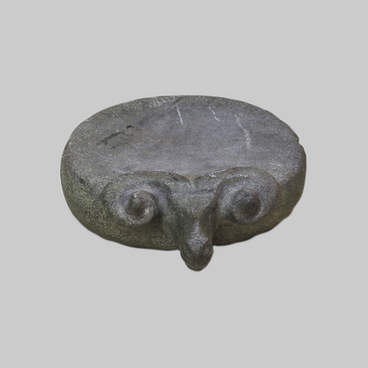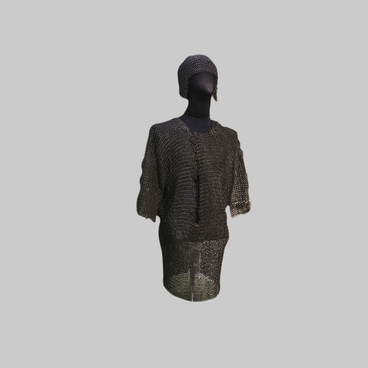The permanent exhibition of the State Museum of the South Ural History contains a copy of a page from the most important document in the history of Chelyabinsk: the 1739 Chelyabinsk Fortress census book.
The population census took place three years after the fortress had been founded. Colonel Alexey Tevkelev was responsible for recruiting settlers into the fortress. According to the census, as much as 203 early settler families (1,133 people) lived in Chelyabinsk in 1739.
The Chelyabinsk fortress census book gives us the number and composition of the early settlers. It contains valuable demographic data from the city’s early days. The census followed a certain procedure: the full names of family bolshaks (heads), their wives, fathers, mothers, brothers, sisters, and children living with them were recorded, as well as their age, the origin of the heads of families (where they came from and what they did for living), and the names of the Orenburg expedition officers who registered them as Cossacks to settle in the Chelyabinsk Fortress.
It has been established that the biggest number of settler families came from the Shadrinsk area, from the estates of the Dalmatov Monastery, and from the Trans-Ural settlements of Butkinskaya, Irbitskaya, and Krasnoslobodskaya. The heads of 38 families had no place of permanent residence. As evidenced by the census book, the first Chelyabinsk residents were not runaway peasant serfs from Central Russia, but the indigenous inhabitants of the Trans-Ural region. At the time, the 89-year-old S. A. Permyakov was the oldest resident of Chelyabinsk. The city also had 16 more residents aged over 80. As of 1740, there were 96 three-year-old children in Chelyabinsk. They should be considered the first indigenous residents of Chelyabinsk. Kazantsev was the most common surname among the 157 surnames recorded. The most popular of the 114 recorded male names were Ivan, Fedor, and Vasily. As for female names, there were 60 in total, with Avdotya, Paraskovya, and Anna being the most common.
The fortress’s permanent population was recruited from peasants from the Trans-Urals settlements. They were registered as Cossacks. The first to be recruited were peasants who took part in the construction of the fortress.
The fortress’s garrison consisted of streltsy (the units of Russian firearm infantry from the 16th to the early 18th centuries and also a social stratum) and Cossacks. These were soldiers of the Tobolsk and Yenisei infantry regiments, service-class people (Siberian Cossacks), and peasants registered as Cossacks, who moved there with their families from the Isetskaya settlement. The latter would engage in arable farming while on guard duty, first on nearby lands, and then in more remote areas.
The population census took place three years after the fortress had been founded. Colonel Alexey Tevkelev was responsible for recruiting settlers into the fortress. According to the census, as much as 203 early settler families (1,133 people) lived in Chelyabinsk in 1739.
The Chelyabinsk fortress census book gives us the number and composition of the early settlers. It contains valuable demographic data from the city’s early days. The census followed a certain procedure: the full names of family bolshaks (heads), their wives, fathers, mothers, brothers, sisters, and children living with them were recorded, as well as their age, the origin of the heads of families (where they came from and what they did for living), and the names of the Orenburg expedition officers who registered them as Cossacks to settle in the Chelyabinsk Fortress.
It has been established that the biggest number of settler families came from the Shadrinsk area, from the estates of the Dalmatov Monastery, and from the Trans-Ural settlements of Butkinskaya, Irbitskaya, and Krasnoslobodskaya. The heads of 38 families had no place of permanent residence. As evidenced by the census book, the first Chelyabinsk residents were not runaway peasant serfs from Central Russia, but the indigenous inhabitants of the Trans-Ural region. At the time, the 89-year-old S. A. Permyakov was the oldest resident of Chelyabinsk. The city also had 16 more residents aged over 80. As of 1740, there were 96 three-year-old children in Chelyabinsk. They should be considered the first indigenous residents of Chelyabinsk. Kazantsev was the most common surname among the 157 surnames recorded. The most popular of the 114 recorded male names were Ivan, Fedor, and Vasily. As for female names, there were 60 in total, with Avdotya, Paraskovya, and Anna being the most common.
The fortress’s permanent population was recruited from peasants from the Trans-Urals settlements. They were registered as Cossacks. The first to be recruited were peasants who took part in the construction of the fortress.
The fortress’s garrison consisted of streltsy (the units of Russian firearm infantry from the 16th to the early 18th centuries and also a social stratum) and Cossacks. These were soldiers of the Tobolsk and Yenisei infantry regiments, service-class people (Siberian Cossacks), and peasants registered as Cossacks, who moved there with their families from the Isetskaya settlement. The latter would engage in arable farming while on guard duty, first on nearby lands, and then in more remote areas.




